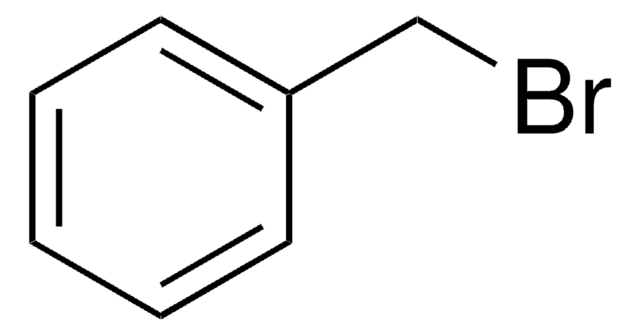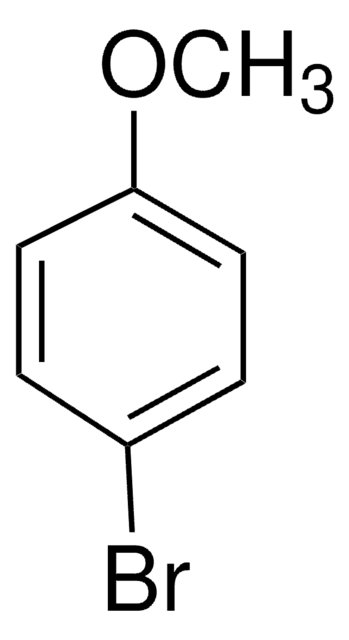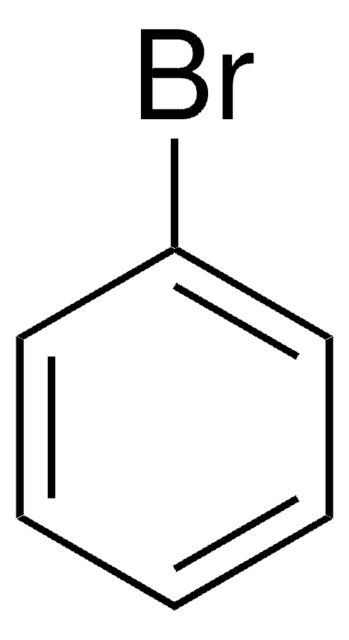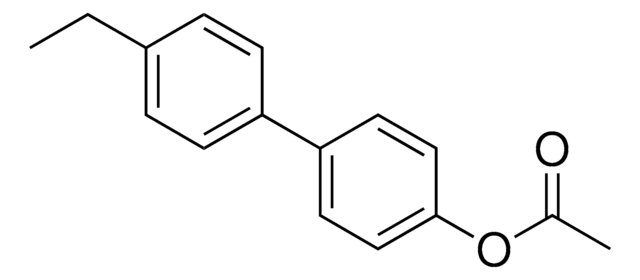123560
α,α-Dibromotoluene
97%
Synonym(s):
Benzal bromide
Sign Into View Organizational & Contract Pricing
All Photos(2)
About This Item
Linear Formula:
C6H5CHBr2
CAS Number:
Molecular Weight:
249.93
Beilstein:
1906098
EC Number:
MDL number:
UNSPSC Code:
12352100
PubChem Substance ID:
NACRES:
NA.22
Recommended Products
Quality Level
Assay
97%
form
liquid
refractive index
n20/D 1.614 (lit.)
bp
156 °C/23 mmHg (lit.)
density
1.51 g/mL at 25 °C (lit.)
SMILES string
BrC(Br)c1ccccc1
InChI
1S/C7H6Br2/c8-7(9)6-4-2-1-3-5-6/h1-5,7H
InChI key
VCJZTATVUDMNLU-UHFFFAOYSA-N
Looking for similar products? Visit Product Comparison Guide
Related Categories
General description
α,α-Dibromotoluene undergoes polymerization with excess Mg to give poly(phenylmethylene)s. It reacts with NaSO2Me at 110°C to yield a mixture of the monosulfone and α,α-disulfone. It undergoes copolycondensation with α,α′-dibromo-p-xylylene in the presence of excess Mg via nucleophilic substitution of in situ generated Grignard reagents.
Signal Word
Danger
Hazard Statements
Precautionary Statements
Hazard Classifications
Acute Tox. 3 Oral - Skin Corr. 1B
Storage Class Code
6.1A - Combustible acute toxic Cat. 1 and 2 / very toxic hazardous materials
WGK
WGK 3
Flash Point(F)
228.2 °F - closed cup
Flash Point(C)
109 °C - closed cup
Personal Protective Equipment
dust mask type N95 (US), Eyeshields, Gloves
Choose from one of the most recent versions:
Already Own This Product?
Find documentation for the products that you have recently purchased in the Document Library.
α,α-Dibromotoluene as a monomer for poly (substituted methylene) synthesis: Magnesium-mediated polycondensation of α,α-dibromotoluene and magnesium/copper-mediated copolycondensation of α,α-dibromotoluene with 1, 6-dibromohexane.
Ihara E, et al.
Journal of Polymer Science Part A: Polymer Chemistry, 44(19), 5661-5671 (2006)
Mg-mediated Copolycondensation of a, a-Dibromotoluene with Bifunctional Electrophiles.
Ihara E, et al.
Polym. Bull., 60(2-3), 211-218 (2008)
Novel synthesis of sulfones from a, a-dibromomethyl aromatics.
Xu F, et al.
Tetrahedron Letters, 44(6), 1283-1286 (2003)
Na Wang et al.
Journal of photochemistry and photobiology. B, Biology, 210, 111978-111978 (2020-08-11)
Common bacterial pathogens have become resistant to traditional antibiotics, representing an indispensable public health crisis. Photodynamic therapy (PDT), especially when common visible light sources are used as photodynamic power, is a promising bactericidal method. Based on the special photodynamic properties
Our team of scientists has experience in all areas of research including Life Science, Material Science, Chemical Synthesis, Chromatography, Analytical and many others.
Contact Technical Service









